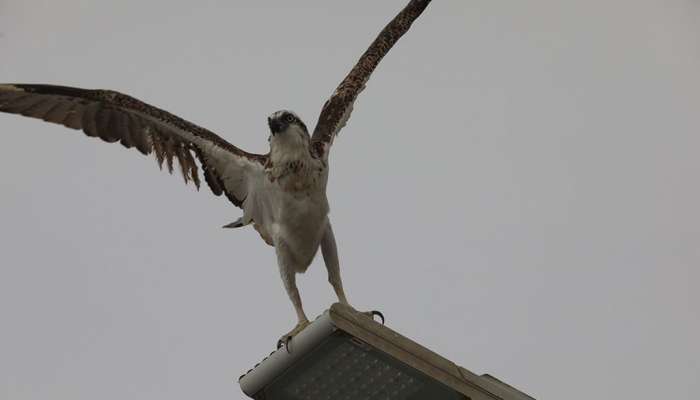
Muscat: The Environment Authority (EA), represented by the Directorate General of Environment in Dhofar Governorate, in cooperation with the Office of the Deputy Wali of Shaleem and The Hallaniyat Islands, carried out an exploratory field survey of plants, animals and water sources.
Over a ten-day period, the survey included a number of Al-Halaniyat islands, namely: (Al-Halaniyat, Al-Souda, and Al-Qibliya), with the aim of identifying the main ecosystems, limiting the biodiversity of the islands, and searching for fresh water sources in an effort to obtain accurate information about the natural resources of the islands, using patrols, trap cameras, and drones.
On Al Hallaniyat Island, 13 species of plants and 14 species of mammals, including reptiles, insects, amphibians and whales were monitored. This also included the Arabian Humpback Whale - this type of whale does not migrate and is seen throughout the year as it reproduces and lives near the island - the bottlenose dolphin settled near the Omani coast, the mountain goat, grasshopper, and 9 species of birds such as eagle, gray heron, white heron, wheatear, zimim, Indian crow and sandpiper.
There are 5 types of plants on Al-Soudah Island, namely: Asalib (Lasaf), Sana Makki, Haram, Al-Ragl Al-Bahri, Metkeh or Al-Aljan, and 9 types of mammals, reptiles, amphibians, and insects. The team also noted the presence of traces of turtle nesting in two locations on the island, which means that turtles prefer to nest in the island during the month of May every year.
The island of Qibla is home to the breeding and nesting of spotted gannets, as the number of nests that have been monitored reaches more than a thousand.
The team came out with a number of recommendations aimed at increasing interest in the islands to protect the biodiversity of plants, animals and marine life. It also recommended the experiment of releasing deer and mule deer on the islands, as there are no predators, as well as establishing a nursery to propagate fennel and mangrove plants, and cultivate other species, and expanding the control campaign and eliminating invasive birds on the islands. It also recommended that diving and cleaning campaigns be carried out for coral reefs to protect marine life.